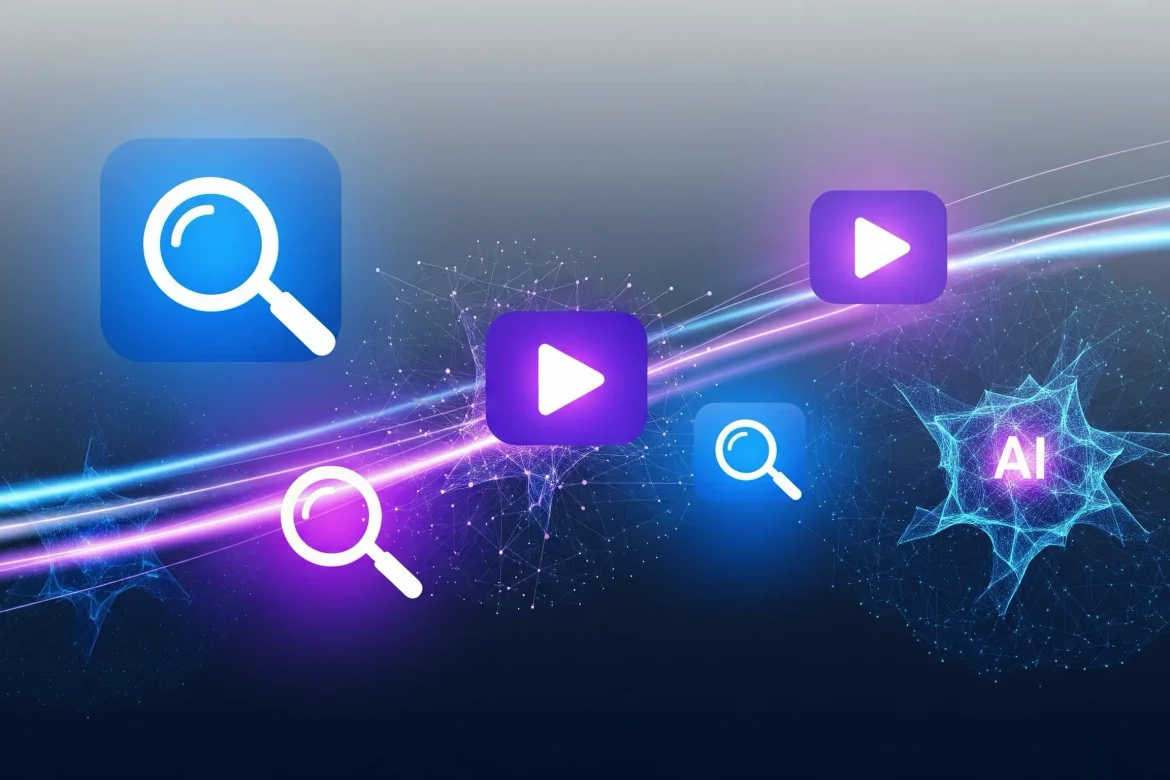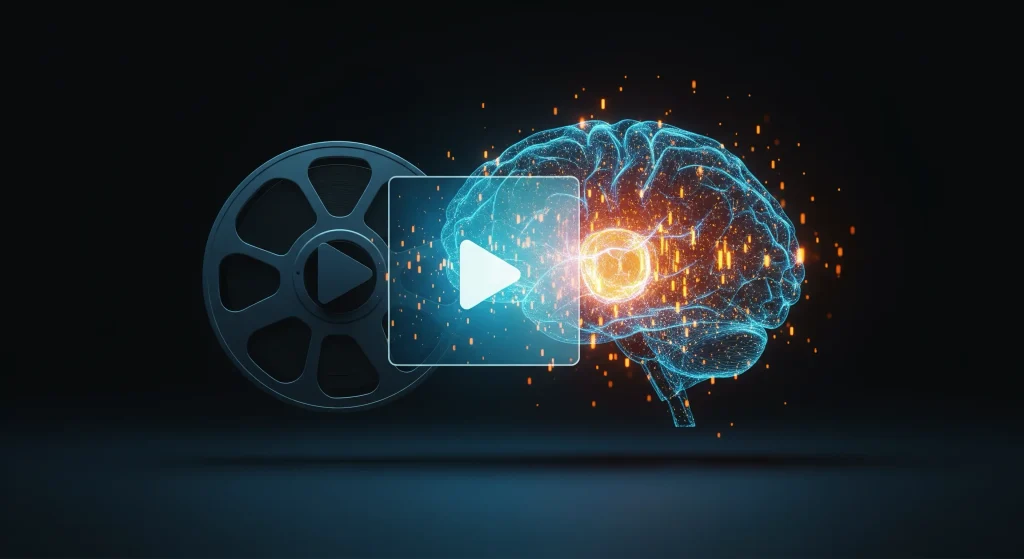
|
Getting your Trinity Audio player ready...
|
The world of search is undergoing its most significant transformation in a decade. The quiet rise of AI-powered search engines, including Google’s Search Generative Experience (SGE) and sophisticated chatbots like ChatGPT and Gemini, is fundamentally changing how audiences discover content. For video creators, YouTubers, and digital publishers, this isn’t just another algorithm update—it’s a paradigm shift.
Gone are the days of a simple list of ten blue links. Today, users are presented with rich, AI-generated summaries that directly answer their questions, often pulling information from multiple sources and formats. And right in the middle of this new landscape is video. Getting your content featured, cited, or even embedded within these AI answers is the next frontier of digital visibility. It represents a strategic opportunity to leapfrog competitors and establish your authority directly on the search results page.
This guide will demystify this new era of video SEO 2025. We’ll explore how you can optimize your content to be “quoted” by AI, dive into the mechanics of AI video summary ranking, and provide actionable strategies for SGE video carousel optimization. By mastering YouTube metadata best practices and leveraging technical tools like video schema markup, you can position your content to not just be found, but to be the definitive answer in the age of AI.
The New Search Frontier: Understanding SGE and AI Summaries
Before we dive into the “how,” it’s crucial to understand the “what.” What exactly is happening when a user types a query into this new generation of search tools?
At its core, Google’s SGE and other AI-driven search models aim to provide a single, comprehensive answer instead of just a list of resources. The AI scours the web, analyzes top-ranking pages, articles, and videos, and synthesizes the information into a coherent, easy-to-digest “AI Snapshot” or “AI Overview” at the very top of the results page.
The key thing for creators to understand is that these AI summaries are not just text-based. They frequently include carousels of products, images, and, most importantly, videos. The AI identifies videos that it deems highly relevant and trustworthy and presents them as either supporting evidence or the primary source of information. This means your video can appear directly within the AI-generated answer, complete with its thumbnail and a link, giving you unprecedented visibility.
Why Your Videos are a Goldmine for AI
AI models are designed to deliver the most helpful and engaging user experience possible. Videos excel at this. They can demonstrate a process, explain a complex topic, or offer a first-hand perspective in a way that text often can’t.
Google’s own E-E-A-T guidelines (Experience, Expertise, Authoritativeness, and Trustworthiness) are central to this. A video literally shows experience. A product review where you unbox and use the item, a tutorial where you perform the steps on screen, or a case study featuring a real client—these formats are powerful signals of authenticity that AI is learning to prioritize. Your content isn’t just a webpage; it’s proof.
How AI “Watches” Your Videos: The Mechanics of AI Video Summary Ranking
Here’s a critical secret to success in this new landscape: AI doesn’t “watch” your videos in the way a human does. It reads them. To achieve high AI video summary ranking, you must make your video’s content as legible and understandable to a machine as possible.
An AI model analyzes several layers of data to comprehend your video:
- Transcripts and Closed Captions: This is the single most important element. The full text of your video serves as the primary source code for the AI. It scans your transcript for keywords, concepts, entities, and direct answers to potential user questions. An accurate, well-formatted transcript is no longer optional; it’s the foundation of modern video SEO.
- Audio Track: The AI analyzes the audio for clarity, tone, and the explicit mention of keywords. Saying your target keywords and phrases aloud, especially near the beginning of the video, provides a strong contextual signal.
- Metadata (Titles, Descriptions, Tags): This is the classic pillar of YouTube SEO, and it’s more important than ever. Your title is the headline, your description is the abstract, and your tags are the index. This metadata tells the AI what the video is about before it even processes the content.
- Video Structure (Chapters/Timestamps): Breaking your video into logical, timestamped chapters is like giving the AI a table of contents. Each chapter title becomes a mini-headline that signals a specific sub-topic. This allows the AI to pinpoint the exact segment of your video that answers a specific query and potentially surface a “Key Moment” in search results.
- On-Page Context: The AI doesn’t just look at the video itself. It also analyzes the text on the webpage where the video is embedded. The surrounding H1s, H2s, and paragraphs on your blog post or website give Google critical context about the video’s relevance and purpose.

Your Blueprint for Visibility: Optimizing for SGE and AI Chatbots
Now, let’s get practical. How do you take the theory and turn it into a concrete strategy? Optimizing for AI requires a multi-faceted approach that blends content strategy with technical precision.
Restructure Your Content for Conversational Search
The way people use search is becoming more natural and conversational. Instead of “running shoes review,” they’re asking, “what are the best running shoes for marathon training with flat feet?” Your content strategy needs to reflect this.
- Target Long-Tail Keywords: Use tools like AnswerThePublic, Ahrefs, or even Google’s “People Also Ask” section to identify the full questions your audience is asking.
- Create “Answer-First” Content: Structure your video scripts to answer a specific question directly and concisely within the first 30-60 seconds. Imagine the AI is looking for the perfect soundbite to “quote.” Give it one. For example, start with, “The single best way to improve your video’s audio is by using a dedicated lavalier microphone. Here’s why…”
- Build Topic Clusters: Create a series of interconnected videos around a core topic. This establishes your channel or website’s topical authority, signaling to the AI that you are an expert in this niche.
Master SGE Video Carousel Optimization
Appearing in that coveted video carousel within an SGE result can drive significant traffic. This requires a focus on both relevance and click-worthiness.
- Design for the Click: Your thumbnail is your billboard. In the context of SGE, it’s competing with other high-quality sources. Use high-contrast colors, clear and expressive faces, and minimal, bold text that reinforces the video’s core promise.
- Create “Quotable” Moments: Edit your videos to include clear, impactful statements or on-screen text overlays that summarize a key point. These are the moments an AI is most likely to latch onto as a concise answer.
- Optimize for Key Moments: Use YouTube’s chapter feature religiously. Give your chapters descriptive, keyword-rich titles (e.g., “Step 3: Configuring Your Camera Settings” instead of just “Step 3”). This helps Google automatically generate deep links directly to the most relevant part of your video.
The Power of Metadata: Your Technical Toolkit for AI Dominance
If your content is the star of the show, metadata is the entire backstage crew making sure it gets seen. Getting this right is essential for both YouTube metadata best practices and broader web visibility.
Supercharge Your YouTube Metadata for 2025
Your YouTube metadata is your primary communication channel with the platform’s algorithm and, by extension, Google’s search AI.
- Titles: Your primary keyword should appear as early as possible. Frame the title as a solution or a direct answer to a query.
- Old Way:
My Cool Gadget Review - New Way:
The Ultimate 2025 Gadget Review: Is It Worth The Hype?
- Old Way:
- Descriptions: Write detailed, mini-blog posts in your description box (aim for 200-300 words). Use your primary keyword in the first 25 words. Weave in secondary and related keywords naturally. Most importantly, use this space to add your video transcript and link to your chapter timestamps.
- Hashtags & Tags: Use 3-5 relevant hashtags in your description that summarize the core topics. In the tags section, use a mix of broad and specific keywords. Include your main keyword, variations, and common misspellings.
- Transcripts: We’ve said it before, but it bears repeating: upload a manually reviewed, 100% accurate transcript. Do not rely solely on YouTube’s auto-generated captions, which can contain errors that confuse the AI.
Unlock AI Visibility with Video Schema Markup
For creators who host videos on their own websites, video schema markup is a superpower. Schema is a type of code (specifically, structured data) that you add to your website’s HTML to explicitly tell search engines what your content is about. It’s like a secret cheat sheet for the AI.
By implementing VideoObject schema, you can spoon-feed Google critical information, including:
- The video’s title and description.
- The thumbnail URL.
- The video’s duration.
- The upload date.
- The full transcript.
Here is a simplified example of what VideoObject schema in the JSON-LD format looks like:
{
"@context": "https://schema.org",
"@type": "VideoObject",
"name": "Video SEO 2025: A Complete Guide for Creators",
"description": "Learn the essential video SEO strategies for ranking in Google SGE and AI chatbots. This guide covers metadata, schema markup, and content structure.",
"thumbnailUrl": "https://krotovstudio.com/thumbnails/video-seo-2025.jpg",
"uploadDate": "2025-06-12",
"duration": "PT10M32S",
"contentUrl": "https://krotovstudio.com/videos/video-seo-guide.mp4",
"transcript": "Welcome to our guide on video SEO for 2025. In this video, we're going to cover..."
}
While this may look technical, plugins for platforms like WordPress (such as Yoast SEO or Rank Math) can help you generate and implement this code without having to write it manually. Implementing this markup dramatically increases the likelihood that search engines will understand your video’s context and feature it in rich results, including AI-driven carousels.
Conclusion: Position Your Content for the Future of Search
The rise of SGE and AI-powered search is not a threat; it’s an invitation. It’s a call for creators to produce higher-quality, more helpful, and more authentic content than ever before. The algorithms are no longer just rewarding clever keyword placement; they are rewarding genuine value.
By shifting your mindset from simply “ranking” to “answering,” you align your strategy with the very core of what these new technologies are trying to achieve. Focus on creating clear, well-structured videos that address the specific questions of your audience. Be meticulous with your metadata, providing rich context through titles, descriptions, and timestamps. And for those hosting on your own domains, embrace the technical power of video schema markup to make your content perfectly legible to your new AI audience.
The creators and publishers who adapt to this new reality will not only survive—they will thrive, building a direct line to their audience from the most valuable digital real estate in the world: the AI-powered answer.
